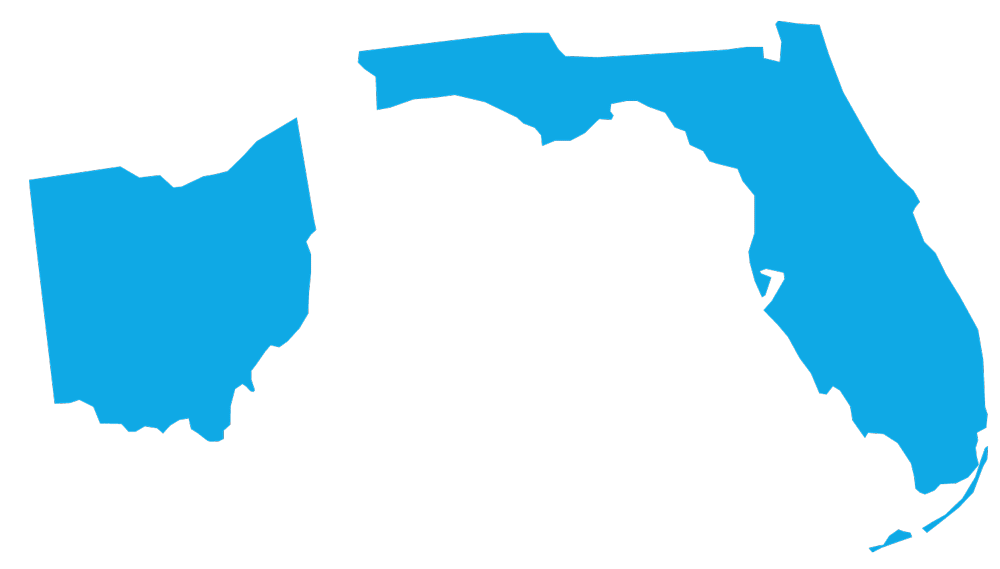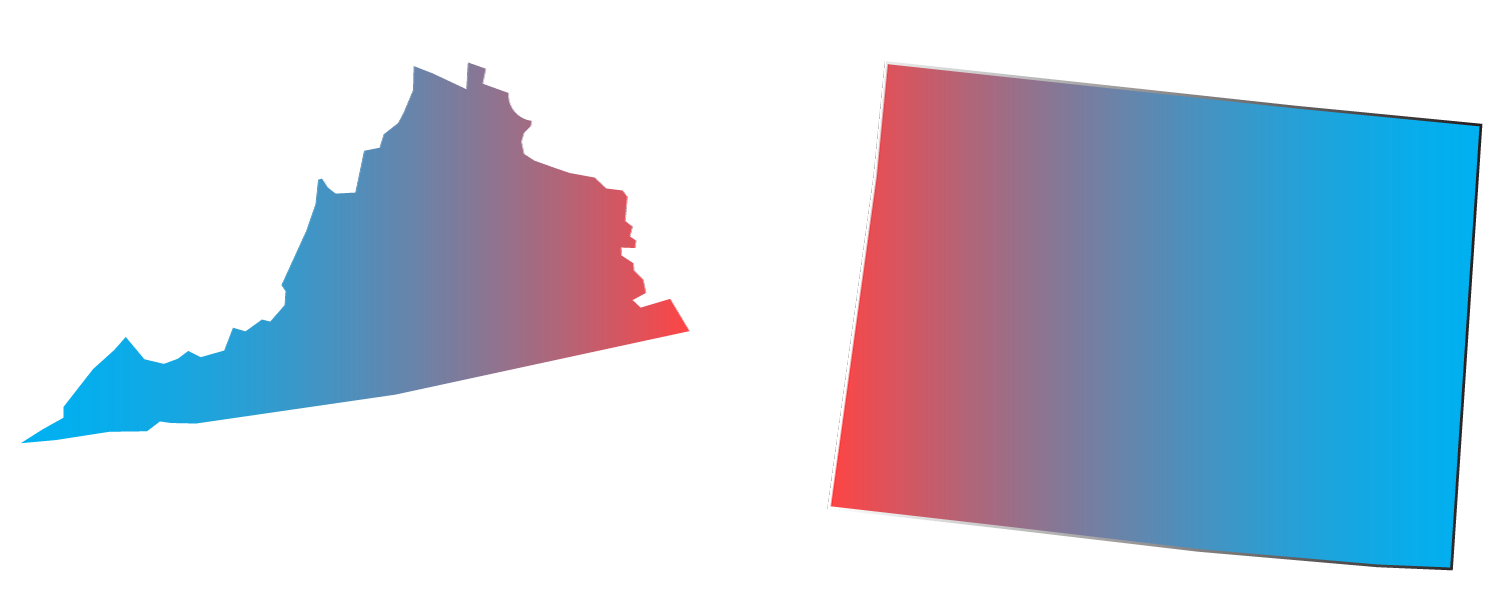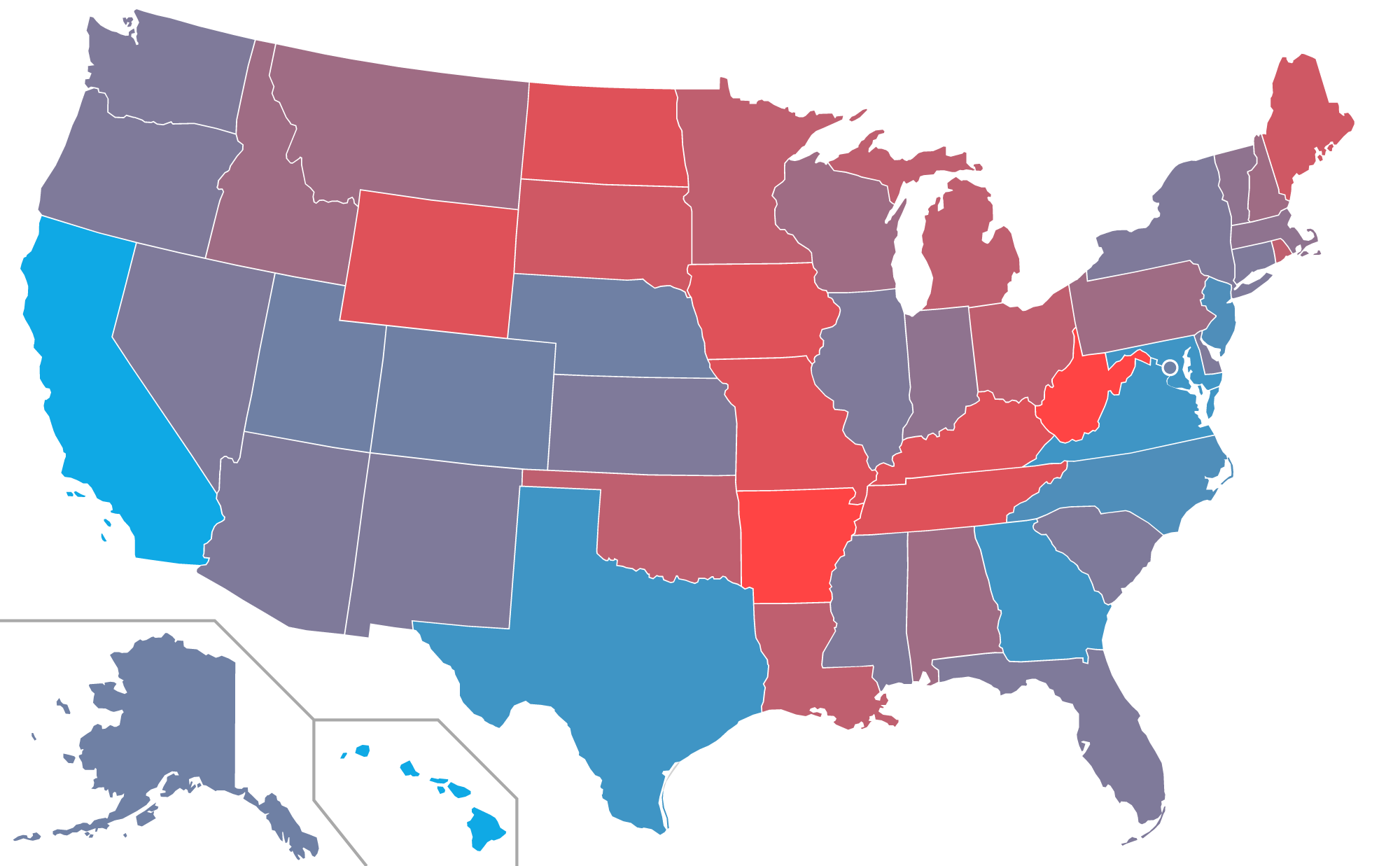Until election night, most of the (left leaning) coverage of the 2016 presidential election focused on a small group of 9 to 16 "swing states". Conventional wisdom says that swing states are states where there is a thin margin in the polls, and enough undecided or swayable voters to swing the state toward either candidate.
Polls and Advertising
Framing the election this way creates erratic trends seen in election forecasts. Small shifts in polls seen across several swing states can cause severe shifts in national forecasts. In 2016, FiveThirtyEight’s forecast shifted Hillary Clinton’s chance of winning from 51% on July 31 to 88% on August 8, a little over a week later.
Taking a closer look at results from past presidential elections shows that the concept of swing states may be a misnomer. Looking at 2016 results in the context of past elections shows that it would be wise for Democrats to abandon the swing state logic and look for more effective ways to get to 270 electoral votes. Few true swing states exist, and focusing on states which are truly shifting to left is a way for Democrats to win in 2020 and beyond.

Along with the media focus on swing states, the presidential campaigns themselves put most of their advertising dollars toward the same group of close races. Bloomberg Politics showed 16 states where at least one candidate was spending money for TV ads last fall. Most of this money was going towards 4 of the top 6 swing states by electoral vote: Florida, North Carolina, Ohio and Pennsylvania.
The Clinton campaign’s TV ad spending was greater than Trump’s, but Trump’s reveals more of his campaign’s intentions and perceived paths to an electoral college victory. The Trump campaign’s TV ad spending makes it clear that they didn’t think he could win Michigan (he did), and that they thought he had a chance in Colorado and Virginia (he didn’t).
Swing and Drift
Taking a step back from the media definition of swing state that puts the label on any state with a close race, there are only 4 states that in the last 7 presidential elections since 1992 that have voted for each party at least 3 times.

Looking at these 4 states shows two distinct stories. Colorado and Virginia that are drifting from the Republican party to the Democratic party, while Florida and Ohio are the only true swing states that regularly shift support from one party to the other.
Democratic % change from previous election year
The algorithm for determining the winner in Florida and Ohio in elections since 1996 is actually very simple. If there is a sitting president on the ballot, both states will vote for them; if there is not a sitting president on the ballot both states will vote for the opposite party of the sitting president. While this trend does not bode well for Democrats in 2020, looking at the "drift" states shows a more optimistic picture.
Both Colorado and Virginia voted Republican in 1996, 2000, and 2004, then voted Democratic in 2008, 2012, and 2016. Both states saw a large shift of between 12% and 14% for the Republican candidate in 2008, but in either election since neither state has dipped below a 3% margin for the Democratic candidate. Both Colorado and Virginia are becoming more Democratic over time, and we can expect that trend to continue.
8 states that have voted for each party at least twice in the past 7 presidential elections and they can be split into three categories. States that are drifting toward the Republican party: Arkansas, Kentucky, Louisiana, Missouri, Tennessee, West Virginia; and swing-ish states that tend to vote for the winner of the election: Iowa and Nevada.

Average drift in the difference between the national popular vote and individual states' popular vote between 2008 and 2016
The split between swing states that switch back and forth, and drift states that seem like they have made a stable shift from one party to the other shows an effective strategy for compounding election success. As the Democrats have succeeded in flipping Colorado and Virginia, the Trump campaign's success in the Rust Belt will carry into future elections. The 3 "recount" states that decided the 2016 election, Michigan, Pennsylvania, and Wisconsin, had not voted Republican since the 1980s, but have all drifted towards the Republican party steadily since 2008.
Texas
The polarization that many people feel when looking at election results is real in many ways. For the most part, states that voted for Hillary Clinton in 2016 have drifted towards the Democratic party since 2008, while states that voted for Donald Trump in 2016 have drifted towards the Republican party. There are a few states though that could tip the 2020 election, the most important one is Texas.
The two largest states, California and Texas have voted for the Democratic party, and the Republican party respectively in each of the last 7 elections. But, in each of the 3 elections won by a Republican (2000, 2004, and 2016), flipping Texas to the Democrats would have swung the election, while in none of the 4 elections won by Democrats would flipping California to the Republicans have changed the outcome. By traditional swing state logic, in most elections, a party needs to win many swing states to reach 270 electoral votes. For the Democrats, Texas is in many ways the ultimate swing state, if they can win Texas they can lose almost every historically close state.
This goal may not be as far fetched as it sounds. Ignoring Utah and Hawaii because of home state swings, only California has drifted farther left than Texas in the last 3 elections. Trump won Texas in 2016 by a large 9% margin, but 46 out of 51 states (plus D.C.) have had at least one shift at least that big since 1992. Texas also continues to grow in population quickly, and is projected to gain 3 electoral votes in the 2024 election.
Instead of continuing to pour advertising dollars into states like Florida, Ohio, and Pennsylvania where demographic shifts tend to work in Republicans’ favor, Democrats should focus their resources almost exclusively in Texas where the momentum is already going in their direction.